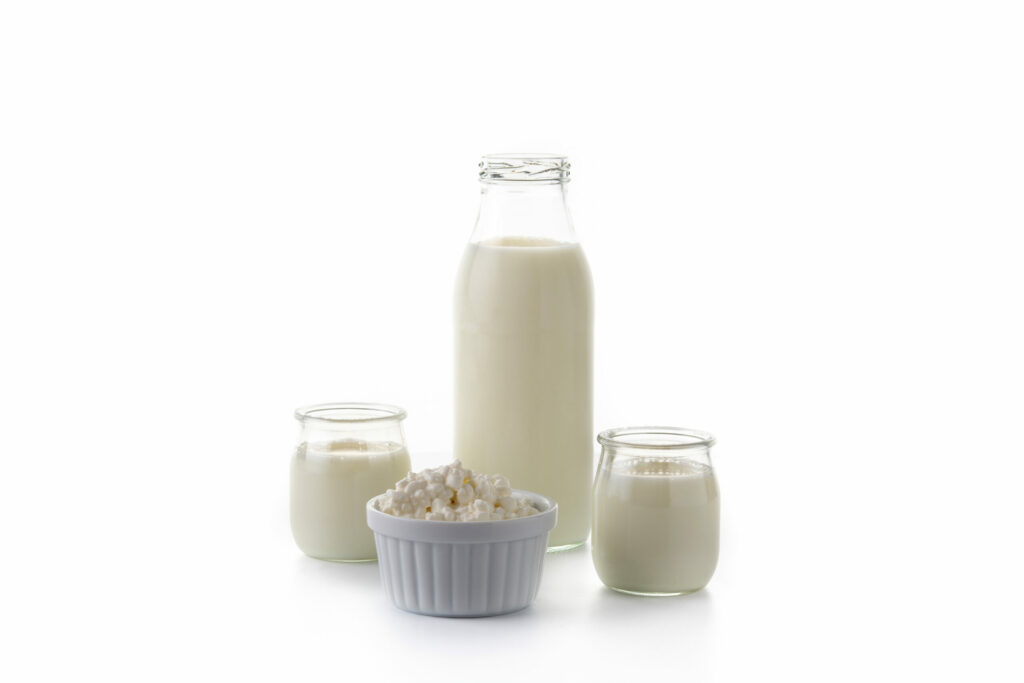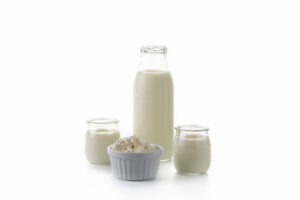
Why Is Sugar So Toxic?
Learn how sugar affects cell signaling, protein expression and more and contributes to the many symptoms of diabetes.
Dairy and kefir help prevent and reverse many of these toxic effects.
Date Nut Muffins
Date Nut Muffins are a classic British teatime treat made with sweet dates and toasted walnuts.
Date nut muffins are a handy variation on date nut bread, which originated in Great Britain (specifically Scotland) as a tea time treat. This recipe uses a small amount of brown sugar.
Even though recipe title is bran muffins, contains no bran.
Why Too Much Sugar is Toxic | Jerry Hart, Ph.D.
Jerry Hart describes what’s known about the biochemistry behind sugar’s toxicity.
More diabetes info…
Diabetes is the disease most commonly associated with sugar consumption.
The majority of research conducted has found a positive association between sugars, particularly fructose. Several animal and human studies have observed impaired insulin signalling and increased fasting glucose and insulin resulting from consumption.
An econometric model of repeated cross-sectional data from 175 countries indicated that sugar was significantly correlated with diabetes risk in a dose-dependent manner, with reductions in sugar associated with a decline in diabetes incidence.
Studies that found no relationship between added sugars and subsequent diabetes risk were predominantly investigating glucose or sucrose intake. The majority of studies that identified a significant positive relationship between added sugar and diabetes diagnosis or risk factors measured intake of fructose or fructose-containing beverages, which may indicate a unique deleterious effect of fructose over other forms of carbohydrates. For example, a study in overweight and obese human subjects found that ten weeks of fructose consumption, but not glucose consumption, decreased insulin sensitivity. This issue is further complicated by the fact that natural fructose (from fruit) may be associated with a reduced risk of T2DM, while fructose from SSBs (high-fructose corn syrup) is associated with an increased risk.
A commonly found protective factor for diabetes risk was consumption of fruit or green leafy vegetables and high-fibre, low-GI foods. Some studies investigating the relationship between fat and T2DM found some protection from diabetes attributable to certain fats, particularly dairy.
Remember, no more than 6 teaspoons (25 grams) of added sugar per day for women and 9 teaspoons (38 grams) for men. The AHA limits for children vary depending on their age and caloric needs, but range between 3-6 teaspoons (12 – 25 grams) per day. Children under two should have zero grams of sugar per day.
the metabolic miracle
1. Probiotic kefir must be administered for at least 30 days to achieve a significant reduction of hypertension. An important mechanism by which kefir causes a reduction of BP is through the inhibition of the excessive generation of reactive oxygen species. Elevated oxidative stress contributes cardiovascular abnormalities; vascular inflammation and disturbed blood flow.
2. Kefir lowers cholesterol. Friendly yeast strains in kefir present high levels of bile salt hydrolase activity, which deconjugates bile acids and increases its excretion in the feces, helping to lower cholesterol.
3. Kefir can increase anti-inflammatory cytokines and decrease pro-inflammatory responses, justifying its anti-atherosclerotic potential.
4. Although lifestyle changes and pharmacotherapy are main strategies to control MS (Metabolic Syndrome) progression, these actions show only partial success. It has been shown that healthy gut microbiota helps to control obesity and insulin resistance. The intestinal microbiome differs in lean and obese subjects and insulin resistant patients developed an improvement in the metabolic profile after transplantation with ‘healthy gut microbiota’ from lean donors.
5. Proteinuria and azotemia observed in rats with type I diabetes mellitus were reduced by treatment with kefir.
6. Data have demonstrated that kefir peptides can improve the symptoms of NAFLD, including body weight, energy intake, inflammatory reaction and the formation of fatty liver.
Excerpt Immune For Life 2019
Probiotic treatment (L. curvatus HY7601 and L. plantarum KY1032) at high or low dosage lowered plasma glucose, insulin, triglycerides and oxidative stress levels. However, only high-dose probiotic treatment reduced liver mass and liver cholesterol in rodents.
June 9 commentary
Kefir Benefits
Modern lifestyle and diets have been associated with metabolic disorders and an imbalance in the normal gut microbiota. Probiotics are widely known for their health beneficial properties targeting the gut microbial ecosystem. The aim of our study was to evaluate the preventive effect of Lactobacillus kefiri (L. kefiri) administration in a fructose-rich diet (FRD) mice model. Mice were provided with tap water or fructose-added (20% w/v) drinking water supplemented or not with L. kefiri. Results showed that probiotic administration prevented weight gain and epidydimal adipose tissue (EAT) expansion, with partial reversion of the adipocyte hypertrophy developed by FRD. Moreover, the probiotic prevented the increase of plasma triglycerides and leptin, together with the liver triglyceride content. Leptin adipocyte secretion was also improved by L. kefiri, being able to respond to an insulin stimulus. Glucose intolerance was partially prevented by L. kefiri treatment (GTT) and local inflammation (TNFα; IL1β; IL6 and INFγ) was completely inhibited in EAT. L. kefiri supplementation generated an impact on gut microbiota composition, changing Bacteroidetes and Firmicutes profiles. Overall, our results indicate that the administration of probiotics prevents the deleterious effects of FRD intake and should therefore be promoted to improve metabolic disorders.
Immune For Life 2019
If you like natural health tips like the ones above you can learn more in Immune For Life
